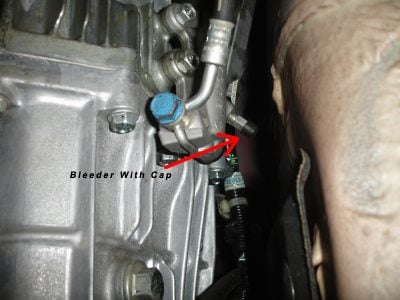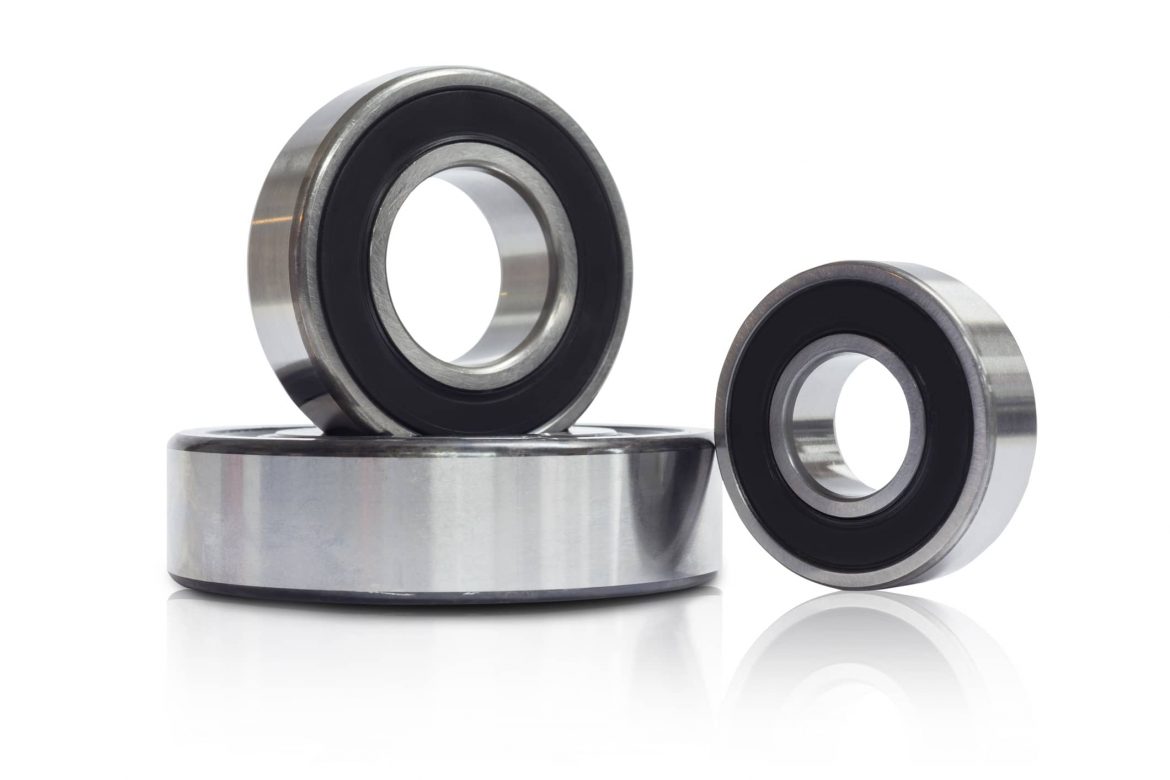The clutch system in your vehicle most likely works very similarly to your brake system. In most cases, it may even use brake fluid as its working fluid. If you drive a classic car or truck you may have a mechanical clutch meaning it operates by a system of levers, pivot points and connecting rods to translate the movement of the clutch pedal into movement of your clutch pressure plate releasing the clutch. New cars use hydraulic clutch systems because they are much simpler to install, take up less space and do not require adjustment as your clutch wears down.
What does it mean to bleed a clutch?
If you have replaced the clutch slave or master cylinder, the lines, or simply changed the fluid, you need to do an adequate job removing the air from the system before your clutch will work properly. This procedure is called “bleeding” your clutch system by most mechanics and is important because air in a hydraulic system will cause it to malfunction. As you press the clutch pedal, the master cylinder forces hydraulic fluid, in this case brake fluid, down through the line into the slave cylinder. The pressure of this fluid will cause the slave cylinder to activate, pushing your clutch fork and disengaging your clutch. If there is air in the system, that air bubble can compress. This compressing air bubble will absorb much of the fluid being sent from the master cylinder to the slave cylinder keeping the slave cylinder from actuating as far as it should, or even at all. If the slave cylinder does not travel as far as it should, your clutch will not fully disengage making it difficult to shift your transmission, especially into 1st gear from a stop.
How do I bleed a clutch?
 To remove the air from your clutch system you need to push or pull the air down through the fluid line to the bleeder valve on the slave cylinder. To keep things clean you should attach a tube to the nipple on the bleeder valve. If you use a clear tube it can be easy to see when all the air has exited the system. The easiest way to bleed a clutch is to use a vacuum pump to pull the fluid and air out of the system while keeping the clutch fluid reservoir topped off. Continue pumping fluid from the bleeder valve until you no longer see air bubbles in the fluid. If you do not have a vacuum pump, you can do this manually with a friend.
To remove the air from your clutch system you need to push or pull the air down through the fluid line to the bleeder valve on the slave cylinder. To keep things clean you should attach a tube to the nipple on the bleeder valve. If you use a clear tube it can be easy to see when all the air has exited the system. The easiest way to bleed a clutch is to use a vacuum pump to pull the fluid and air out of the system while keeping the clutch fluid reservoir topped off. Continue pumping fluid from the bleeder valve until you no longer see air bubbles in the fluid. If you do not have a vacuum pump, you can do this manually with a friend.
With the bleeder valve closed, have your friend depress the clutch pedal as far as they can. Open the bleeder valve and allow the fluid to run out until it slows down, while your friend maintains pressure on the clutch pedal. When the fluid flow slows, while your friend still has pressure on the clutch pedal, close the bleeder valve. Let the clutch pedal back up and repeat the process. Continue this process until no more air bubbles are seen exiting the bleeder valve. Your friend should feel the pedal “stiffen up” as you complete this process as air is easier to compress than the clutch plate release springs.
When you have completed this procedure make sure the bleeder valve is tightly closed, and go for a test drive!
BlueDevil Products can be found on Amazon.com or at AutoZone, Advance Auto Parts, O’Reilly Auto Parts, NAPA, and other major auto parts retailers.
20 responses to "How to Bleed a Clutch"
20 Comments
Related Articles




very informative; thank you!
I realize this is a simple process but I just needed a quick review before digging in this morning. Thank you for providing this!
We just changed the clutch on my 94 7.3L F250 and we can not get pedal. As we open and close the valve on the slave cylinder and work the pedal, we occasionally get sprays of fluid, then just air. It is a process we have struggled with before with our other 7.3’s. Not sure the best way to get a good amount of fluid to run out the valve.
Frank,
Thanks for your question about your F250. While you’re bleeding the clutch always make sure the reservoir cap is off and FULL of fluid. There are two things you might consider trying. First if you remove the slave cylinder, you can try cycling the slave cylinder by hand to try and remove the air from the cylinder, then you might have better luck bleeding it. Also, you may consider using a vacuum pump (available at most parts stores) to add vacuum to the bleeder. This way you’ll both be pushing fluid down with the brake pedal and drawing it through with the vacuum which can help remove stubborn air pockets.
Would this process work on a1995 4.0 explorer?
Ambrose,
Yes, this procedure will work on any vehicle that has a hydraulic clutch.
Thanks for your question!
-BD Auto pro
We just replaced the slave cyl. and the master cyi.,we can’t get pressure in the system.We bleed it by had before installing and the fluid at the slave cyl. had no bubels and I thought we had enough peddle but it was not the case.Any sugestions? Thank You
Dale,
Thanks for your question about your clutch. When installing a new master cylinder it is often a good idea to “bench bleed” it before installing meaning you fill the reservoir with fluid, but the cylinder in a vice and bleed it to work fluid through it before attaching the hydraulic line. You can try this without removing anything by simply removing the line from the master cylinder and cycling the pedal a few times being careful to catch the fluid and to keep the reservoir full.
If that doesn’t work make sure the line is very tight (try using line wrenches to tighten) and make sure the slave cylinder is properly aligned with the clutch fork.
Thanks again for your question!
-BD Auto Pro
My 94 ford ranger 3.0L is still being stubborn and and I have tried to bleed the clutch and add fluid , but I’m still not getting the the clutch to stiffen up.
James,
Thanks for your question about the clutch on your Ford Ranger. Since your vehicle is a little older, you may also consider replacing the flexible part of the hydraulic line as it may be worn and started expanding over time. Also, if you simply cannot get the pedal feel you want, you may need to replace your slave or master cylinder as the soft pedal may be caused by worn seals in one or both of the cylinders.
Thanks again for your question!
-BD Auto Pro
I recently replaced my clutch master cylinder and Slave cylinder on my 05 Honda Civic. I did the bleeding process as you described and no bubbles left the Slave when bleeding, but no pressure gets built on the pedal. I’ve bled it for hours but nothing changes. I used a clear hose on the slave nipple to prevent any air from entering through the slave and to pay attention for any air pockets that may leave the line. After hours of bleeding, no bubbles are seen when bleeding but no pressure is building on the pedal. I’ve replaced the slave and master with the same results. Is there anything else it might be?
Jose,
If there is air in your line, one thing you can try is removing the line from the master cylinder and bleeding it from their to try and let any air out that may be trapped at the top of the system. If that doesn’t work, the problem may actually be with the mounting of your slave cylinder. If the slave cylinder isn’t properly aligned on the clutch fork or the clutch fork isn’t engaged in the throwout bearing, it would feel like there isn’t any pedal pressure so we could recommend checking that as well.
Thanks again for your question!
-BD Auto Pro
On a 93 ranger 3.0 is the slave bleeder on the right side of trans?
Rick,
Thanks for your question about your Ranger. Most vehicles with external slave cylinders do have it located on the driver’s side as that is closer to the pedal assembly. The best way to make sure you’re got the right component is to follow the hydraulic line down from the master cylinder in the engine bay. The master cylinder will be outside of the brake booster and be smaller. If you can find that line, follow it down under your truck until it connects to the slave.
Thanks again for your question!
-BD Auto Pro
i just replaced my 2001 mercury cougar clutch kit i have bled the slave cylender if the engine is running it willnot go in gear if i turn the engine off i can shift the gears
David,
Thanks for your question about your Cougar. Based on your description and the work done it does sound like your clutch is not disengaging. First, we’d recommend having a friend operate the clutch pedal while you watch the slave cylinder to make sure the slave cylinder is actually operating. If the slave cylinder doesn’t move with the clutch pedal then you will need to continue to bleed the system and may consider using a vacuum bleeder to aid in moving the fluid through.
If the slave cylinder is moving with the clutch pedal then you clutch fork is most likely not properly aligned with the throwout bearing or pivot point which is keeping it from disengaging the clutch. If that is the case, make sure the end of the clutch fork is properly riding on the throwout bearing and contacting the pivot in the middle.
Thanks again for your question!
-BD Auto Pro
i have a 2001 subaru forester with the 5 speed, i recently had my clutch ,pressure plate, and flywheel replaced. when the car is cold it shifts fine but once it is fully warmed up my clutch pedal gets stuck at the bottom when going from 1st to 2nd. Also if i have it in 1st with the clutch pedal depressed my clutch will start to engage and move the car or kill it.
Ryan,
Thanks for your question about your Forester. It sounds like you may have a bad slave cylinder in your clutch system. That could possibly keep your pedal stuck down and may also allow pressure to bleed past the piston allowing your clutch to slowly start to engage even if you have the pedal fully depressed. First, we’d recommend taking your car back to the shop that did the work as it is possible that they damaged something during the clutch replacement. If that doesn’t work you may consider having someone else operate your clutch pedal while watching the slave cylinder for movement to see if there is a lag in operation or an inability to hold pressure. If either is the case you should replace your slave cylinder.
Thanks again for your question!
-BD Auto Pro
I have a 2001 Honda Civic. When my car broke down i pedal went all the way to the floor and when i checked out what was wrong, i found that the slave cylinder was broken. I replaced the Slave and Master Cylinder for the clutch and I have been bleeding the system for 2 hours with a friend and still no return on the clutch pedal. it still sticks to the floor. Any ideas of what it could be?
Thanks
Hugo,
Thanks for your question about your 2001 Honda Civic! First, you need to make sure all the air has been bled from your clutch system. Try attaching a clear hose to the bleeder valve on the slave cylinder and cycle the clutch pedal. If you can see bubbles in the clear tube then you know you need to continue bleeding the system. If you get a solid flow of brake fluid then your system should be free of air. If this is the case, you may check to see if there is supposed to be a spring return attached to the clutch pedal to paid in its return from the floor. You may also remove the slave cylinder and make sure the push rod is in proper contact with the clutch fork.
Thanks again for your question!
-BD Auto Pro